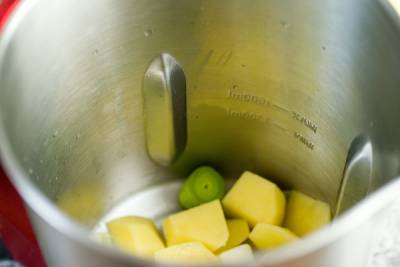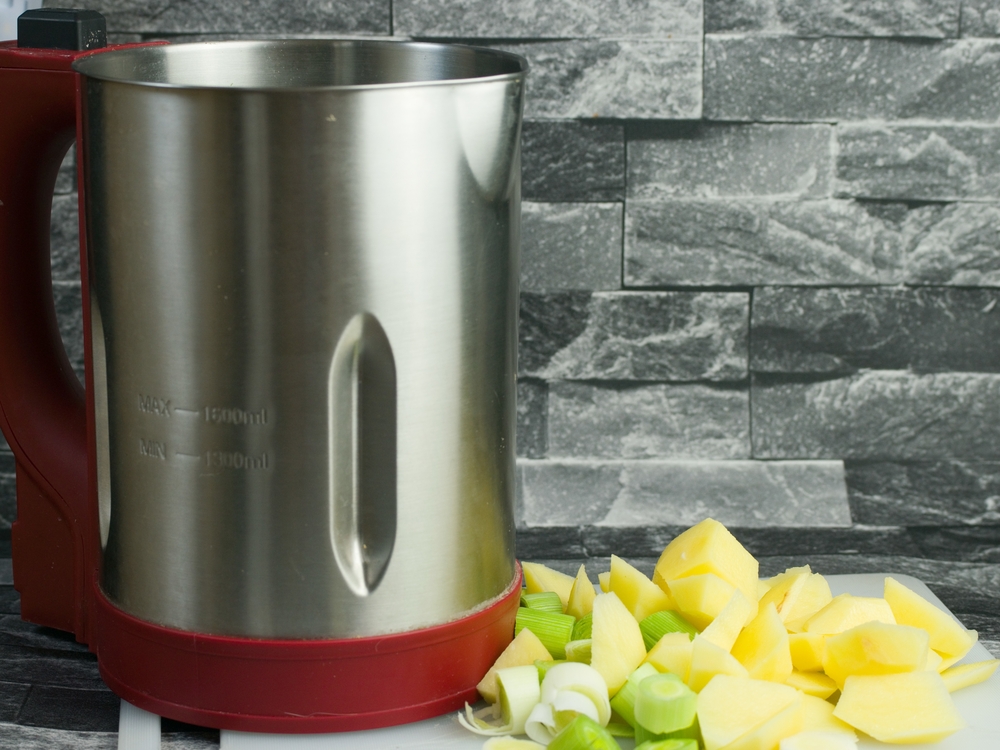If you’re wondering how to clean a burnt soup maker, you’re not alone. As wonderful as soup makers can be for creating warm, hearty meals for the whole family, they can also be extremely difficult to clean when foods stick to the bottom of the pan.
Learning how to restore your soup maker after having burnt on food means you can make the most of your product for as long as possible. Today, we will look at some of the simplest things you can do to clean your burnt soup maker as quickly and painlessly as possible.
How to Clean a Burnt Soup Maker: What You Need
Usually, the easiest way to clean a burnt soup maker is to leave it overnight, soaking in a cleaning solution. One option is to boil some water and mix it with around two-thirds of a cup of biological washing powder.
If you need extra help getting baked beans and other burnt food off your soup maker, you can add baking soda. Baking soda adds as a natural corrosive to help gently remove foods that might be difficult to get rid of otherwise, like burnt bits of tomato paste or chicken.
Don’t use any harsh chemicals or abrasive sponges to work on the burn. If you need a cleaning pad or scrubbing brush to deal with a tough stain, stick to softer products to scrub your soup maker.
How Do You Get Burnt Stuff Out of the Bottom of a Soup Maker?
Step 1: Soaking the Stain
Once you have all the materials, boil some water and pour it into the soup making container. You should coat all the stains with the height of the water. Add your biological washing powder and mix it with a spoon to dissolve everything.
Leave the soup maker overnight (turned off) with your cleaning solution inside.
Step 2: Scrub Carefully
The next day, scrub the stains on your soup maker with a scrubbing brush or cleaning pad. Don’t use anything with metal, as this could break the heating element at the bottom of your appliance.
You may have to repeat the process, adding water to scrub a few times before you get the burnt food out of your soup maker.
Step 3: Dealing With Stubborn Stains
You can also use a mixture of distilled vinegar and baking soda to help get rid of tougher stains. This strategy usually works with most oven cleaning techniques.
Simply pour a little of the soda into your soup maker pan and add your vinegar to the top (small amounts at a time) to create a paste. Coat the soup maker in the paste, leave for an hour or two, and then rinse everything off. Rinse with hot water to help dislodge the burn. This should help you to wash more difficult burnt bits from your pot.
How Easy Is It to Clean a Soup Maker?

Cleaning a soup maker is quite simple. If nothing is burned to the bottom of your soup maker, you can wash the cooking utensil with soap water, like you would any other pot or pan. Don’t forget to clean the lid, too. If you notice ingredients like garlic and other food sticking to your soup maker after cooking, you can use the method above to help wash them away.
Remember, you’ll usually need to leave the soup maker to soak for a decent time after cooking. While it’s still warm, adding water to your soup maker might help stop food from sticking to the pot while you eat.
In some cases, if you can remove your soup pot from the heating element and blending function in your soup maker, you might be able to wash it in your dishwasher, along with your grill rack and other food appliances.
Why Does My Soup Maker Burn on the Bottom?
No matter how careful you are with your recipe, soup burning can be a common problem with a soup maker. The heating element on the button of your soup maker makes it easy for burnt food to get stuck on the pot or pan.
The more burnt soup you have to deal with, the more you ruin the flavour of your soup, and the more difficult cleaning becomes.
Try the following tips to avoid cleaning a burnt soup maker too often.
Stirring More Often
Stirring your soup can help stop burnt-on food from sticking to the bottom of the pan. Go back and check the liquid from time to time, making sure everything continues to cook evenly. This is also a great time to season your soup to taste.
Reducing the Heat
If your soup burns frequently, your cooking method might be off. Try slowing down the process and reducing the heat. This could help to improve the taste and protect your soup-making appliance.
Check Solid Ingredients
If there are solid ingredients in your soups, like vegetables, it might be best to blend or process them before you cook the soup. This will stop big chunks of ingredients from sticking to the base of the appliance. If you don’t mind the extra effort, you can also stir regularly to ensure these bits don’t get burnt.
Add Some Oil
Adding a little bit of oil to your soup maker appliance could stop you from dealing with burnt-on food as often. Just as you’d add oil to your oven racks, using oil on your soup maker will stop foods from sticking.
How Do You Get the Smell Out of a Soup Maker?
You can use a few different methods when cleaning a burnt soup maker. Leaving your burnt soup appliance to soak overnight with boiling water and biological washing powder is often the easiest option. However, if after you leave your soup maker to soak overnight and scrub it with a non-metal scrubbing brush, you notice it has an added smell, you might need an alternative solution.
Get rid of the boiling water or leftover soapy water, and create a mixture of white vinegar and water to rinse over the inside of the soup pot. Use a non-abrasive towel and a cup to measure the solution carefully into the appliance.
As Good as New
We hope you found our guidance on how to clean a burnt soup maker useful. It should be a straightforward task in most cases, but always ensure you read the instructions on your soup maker for more specific tips on how to remove solid ingredients and other burns.
The manual will include additional resources to use when choosing the right cleaning method.
Happy scrubbing!

